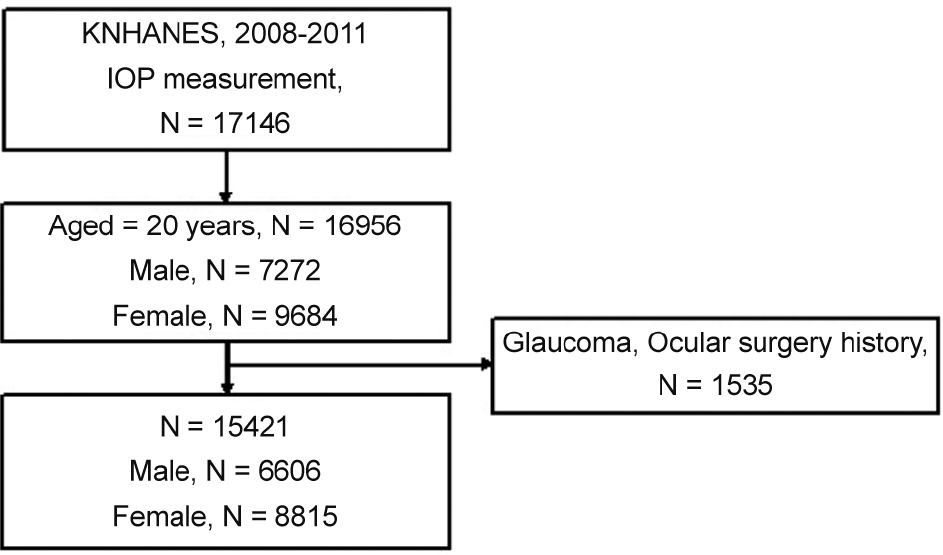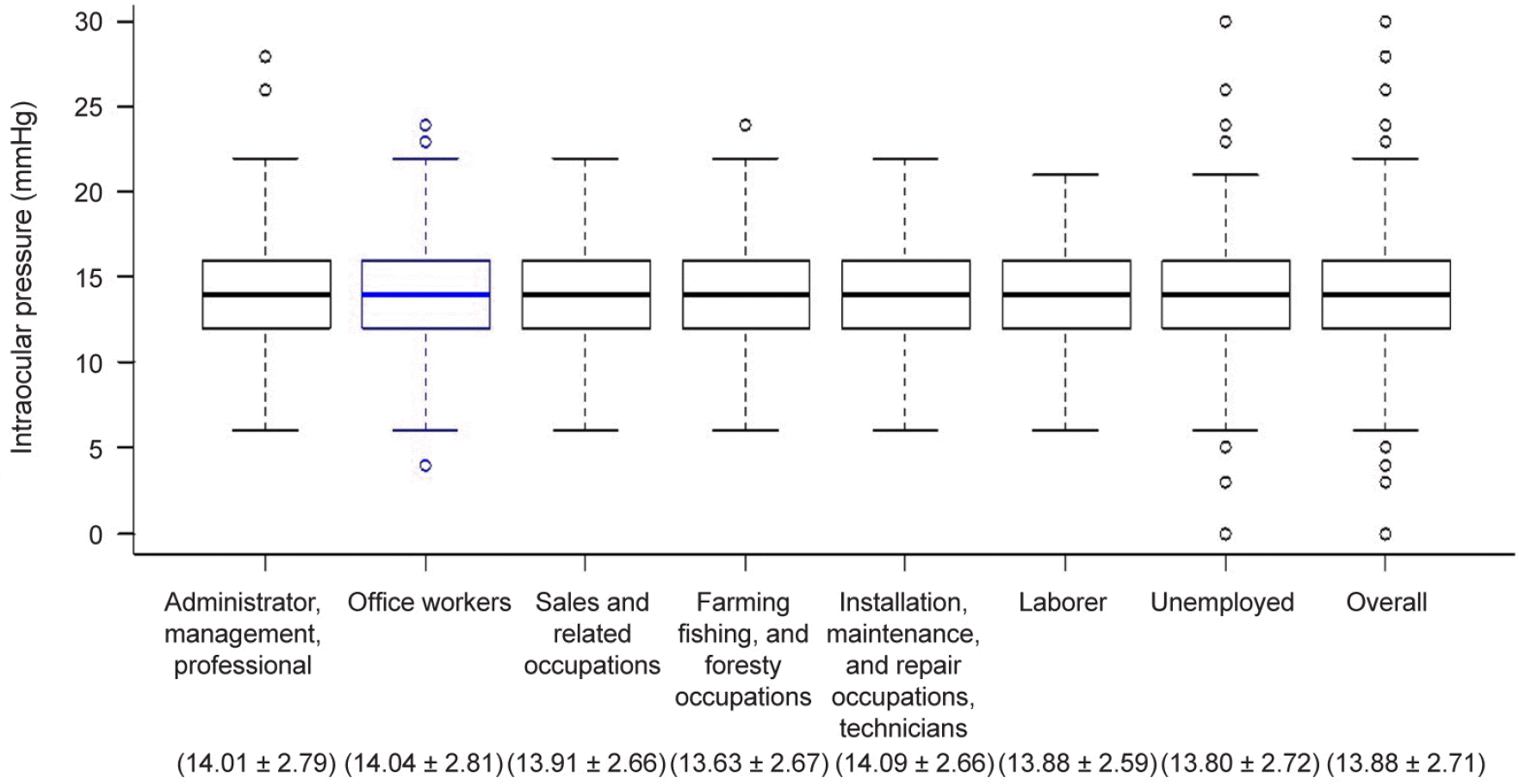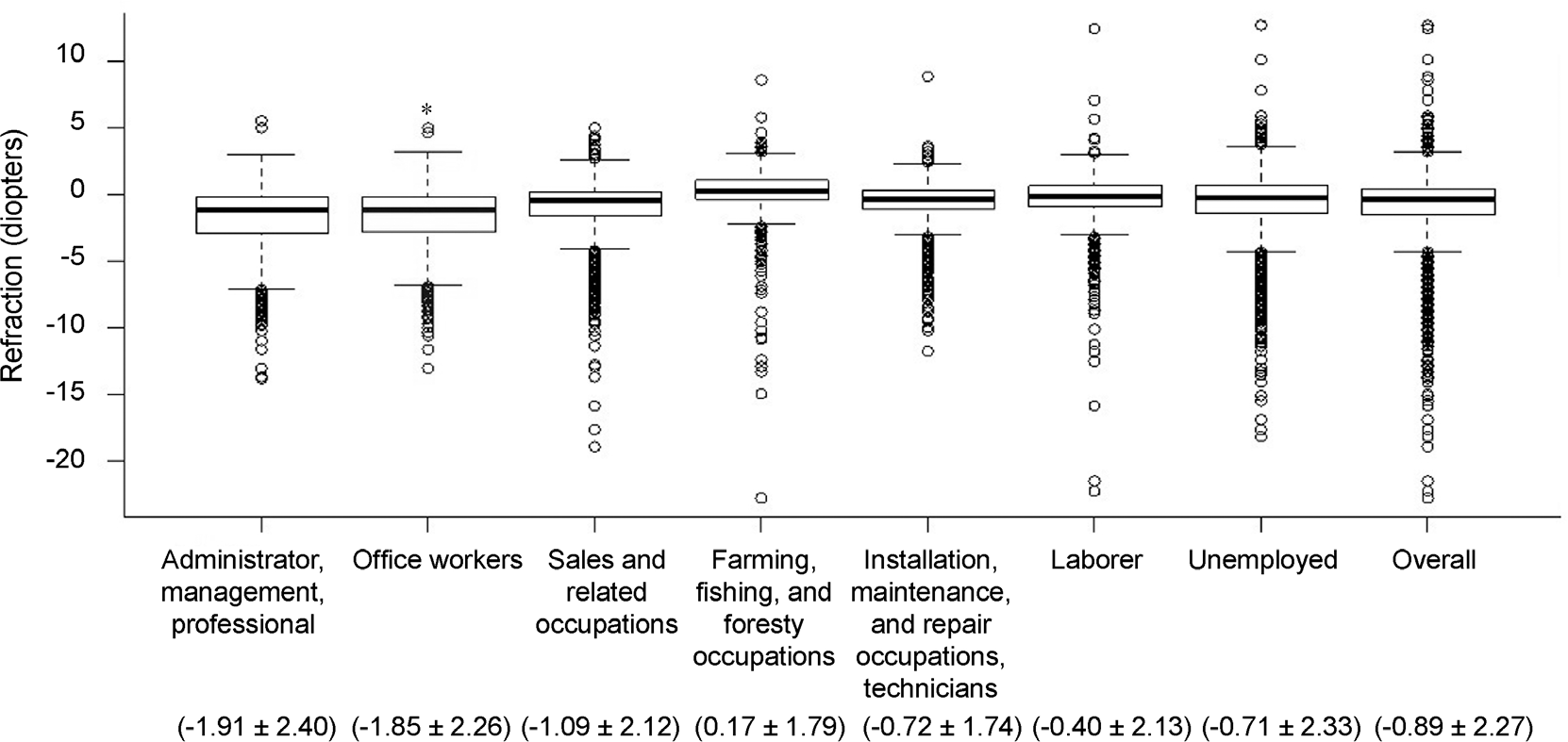1. Kass MA, Heuer DK, Higginbotham EJ. . The Ocular Hypertension Treatment Study: a randomized trial determines that topical ocular hypotensive medication delays or prevents the onset of primary open-angle glaucoma. Arch Ophthalmol. 2002; 120:701–13. discussion 829-30.
2. Higginbotham EJ, Gordon MO, Beiser JA. . The Ocular Hypertension Treatment Study: topical medication delays or pre-vents primary open-angle glaucoma in African American individuals. Arch Ophthalmol. 2004; 122:813–20.
3. Sommer A, Tielsch JM, Katz J. . Relationship between intra-ocular pressure and primary open angle glaucoma among white and black Americans. The Baltimore Eye Survey. Arch Ophthalmol. 1991; 109:1090–5.

4. Dielemans I, Vingerling JR, Algra D. . Primary open-angle glaucoma, intraocular pressure, and systemic blood pressure in the general elderly population. The Rotterdam Study. Ophthalmology. 1995; 102:54–60.

5. Hennis A, Wu SY, Nemesure B. . Hypertension, diabetes, and longitudinal changes in intraocular pressure. Ophthalmology. 2003; 110:908–14.

6. Mitchell P, Smith W, Chey T, Healey PR. . Open-angle glaucoma and diabetes: the Blue Mountains eye study, Australia. Ophthalmology. 1997; 104:712–8.
7. Aydin P, Oram O, Akman A, Dursun D. . Effect of wind instrument playing on intraocular pressure. J Glaucoma. 2000; 9:322–4.

8. Lee E, Yang JW, Kwon JD. . The effect of breath-hold diving on intraocular pressure, optic nerve, visual field in Korean Haenyeo (female divers). J Korean Ophthalmol Soc. 2012; 53:1480–7.

9. Jang HD, Kim DH, Han K. . Relationship between intraocular pressure and parameters of obesity in Korean adults: The 2008-2010 Korea National Health and Nutrition Examination Survey. Curr Eye Res. 2015; 40:1008–17.

10. Chun YH, Han K, Park SH. . Insulin resistance is associated with intraocular pressure elevation in a non-obese Korean population. PLoS One. 2015; 10:e112929.

11. Gwiazda J, Deng L, Dias L. . Association of education and oc-cupation with myopia in COMET parents. Optom Vis Sci. 2011; 88:1045–53.

12. Shimizu N, Nomura H, Ando F. . Refractive errors and factors associated with myopia in an adult Japanese population. Jpn J Ophthalmol. 2003; 47:6–12.

13. Wong TY, Foster PJ, Johnson GJ, Seah SK. . Education, socio-economic status, and ocular dimensions in Chinese adults: the Tanjong Pagar Survey. Br J Ophthalmol. 2002; 86:963–8.

14. Choi JA, Han K, Park YM, Park CK. . Age-related association of re-fractive error with intraocular pressure in the Korea National Health and Nutrition Examination Survey. PLoS One. 2014; 9:111879.

15. Kim KE, Kim MJ, Park KH. . Prevalence, awareness, and risk factors of primary open-angle glaucoma: Korea National Health and Nutrition Examination Survey 2008-2011. Ophthalmology. 2016; 123:532–41.
16. Park HA. . The Korea national health and nutrition examination sur-vey as a primary data source. Korean J Fam Med. 2013; 34:79.

17. Kim Y, Park S, Kim NS, Lee BK. . Inappropriate survey design analysis of the Korean National Health and Nutrition Examination Survey may produce biased results. J Prev Med Public Health. 2013; 46:96–104.

18. Rim HT, Park SY, Yoon JS. . Hormone replacement therapy and eye diseases: KNHANES IV. J Korean Ophthalmol Soc. 2012; 53:1445–50.

19. Lim SG, Han K, Kim HA. . Association between insulin resist-ance and periodontitis in Korean adults. J Clin Periodontol. 2014; 41:121–30.

20. Kim YK, Tumurbaatar U, Ohn YH. . Cerebrospinal fluid pres-sure and trans-lamina cribrosa pressure difference in open-angle glaucoma: KNHANES V. J Korean Ophthalmol Soc. 2016; 57:1392–9.

21. Flammer J, Orgül S, Costa VP. . The impact of ocular blood flow in glaucoma. Prog Retin Eye Res. 2002; 21:359–93.

22. Schuman JS, Massicotte EC, Connolly S. . Increased intra-ocular pressure and visual field defects in high resistance wind in-strument players. Ophthalmology. 2000; 107:127–33.

23. Baskaran M, Raman K, Ramani KK. . Intraocular pressure changes and ocular biometry during Sirsasana (headstand posture) in yoga practitioners. Ophthalmology. 2006; 113:1327–32.

24. Wu SY, Nemesure B, Hennis A. . Nine-year changes in intra-ocular pressure: the Barbados Eye Studies. Arch Ophthalmol. 2006; 124:1631–6.
25. Yoshida M, Ishikawa M, Kokaze A. . Association of life-style with intraocular pressure in middle-aged and older Japanese residents. Jpn J Ophthalmol. 2003; 47:191–8.

26. Gasch AT, Wang P, Pasquale LR. . Determinants of glaucoma awareness in a general eye clinic. Ophthalmology. 2000; 107:303–8.








 PDF
PDF ePub
ePub Citation
Citation Print
Print


 XML Download
XML Download